Explore Mutare - Zimbabwe Travel, Africa
Mutare, a lovely city in Zimbabwe's eastern highlands, serves as a gateway to some of the country's most breathtaking natural beauties. Known for its lush landscapes and vibrant cultural heritage, Mutare offers a unique blend of history, adventure, and local flavor. As Zimbabwe’s fourth largest city, Mutare stands out with its welcoming atmosphere and diverse attractions. Whether you’re a history buff, nature enthusiast, or culture seeker, Mutare promises a memorable experience filled with discovery and delight.
Population: Approximately 225,000 in 2022.
Economy: Mutare's economy is diverse, driven by agriculture, manufacturing, and tourism. Key sectors include horticulture, mining, and local trade, contributing to the city’s vibrant economic landscape.
Landmarks: Famous for the Mutare Recreational Park, Dangamvura Mountain, and Vumba Mountains.
Zimbabwe
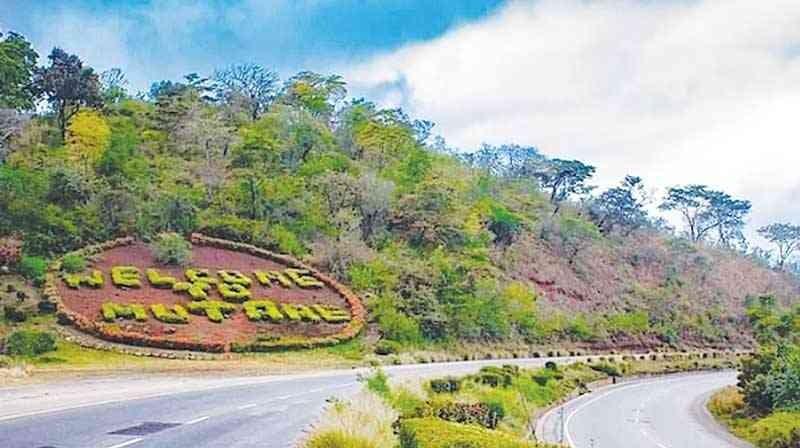
Overview of Mutare
History & Culture Influence
Mutare’s history is deeply intertwined with the rich tapestry of Zimbabwe’s past. Founded in the late 19th century, this city has evolved from a small colonial settlement into a bustling urban center. Its historical significance is marked by several key events, including the legacy of the British South Africa Company and the town’s role in Zimbabwe's independence movement. Culturally, Mutare is a cultural melting pot, with many different customs and influences. The city’s cultural heritage is reflected in its vibrant arts scene, traditional music, and local festivals. The city's particular cultural environment is influenced by several ethnic groups, most notably the Shona and Chewa.
Interaction with The Locals
The city's diverse population includes a mix of ethnic groups, with the Shona people being the predominant group. Mutare is known for its vibrant community and welcoming atmosphere, reflecting a blend of traditional Zimbabwean culture and modern urban life. The citizens are known for their friendliness and hospitality, making it a pleasant destination for visitors.
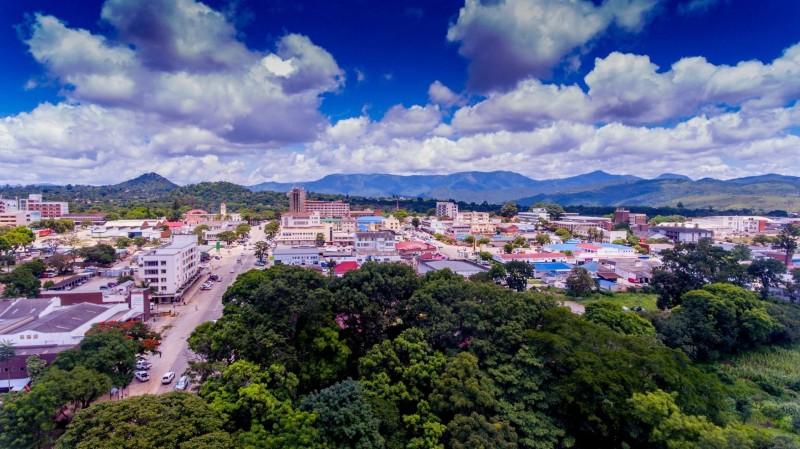
Mutare city, Zimbabwe - © Africa View Facts
Top Attractions in Mutare
Mutare Museum
Located in the heart of the city, the Mutare Museum offers a comprehensive look into the region’s history and culture. The museum features exhibits on prehistoric artifacts, colonial history, and the diverse cultural practices of the local Shona people. Notable displays include traditional beadwork, ceremonial artifacts, and an extensive collection of historical photographs.
Dangamvura Mountain
A natural gem of Mutare, Dangamvura Mountain is renowned for its stunning vistas and outdoor adventures. The mountain is a popular destination for hiking enthusiasts, offering trails that wind through lush forests and rocky outcrops. From the summit, visitors are rewarded with panoramic views of the surrounding highlands and the city below. The area is also ideal for birdwatching, with a variety of native species inhabiting the region. Whether you're looking for a challenging hike or a peaceful nature walk, Dangamvura Mountain provides a refreshing escape into nature.
Vumba Mountains
Just a short drive from Mutare, the Vumba Mountains are a must-visit for nature lovers. This mountain range is characterized by its mist-covered peaks, verdant forests, and rich biodiversity. Visitors can explore well-marked hiking trails that lead through scenic landscapes and past hidden waterfalls. The Vumba Botanical Gardens, located within the range, showcase a diverse collection of indigenous and exotic plant species. The area is also known for its pleasant climate, making it a year-round destination for outdoor activities and relaxation.
Mutare Recreational Park
A family-friendly destination, the Mutare Recreational Park provides a range of amenities for leisure and relaxation. The park features well-maintained picnic areas, children’s playgrounds, and sports facilities, including soccer and basketball courts. The lush green spaces are perfect for a relaxing afternoon outdoors, and the park often hosts community events and activities. Whether you’re looking to enjoy a picnic with family, engage in sports, or simply unwind amidst nature, the Mutare Recreational Park offers a variety of recreational options.
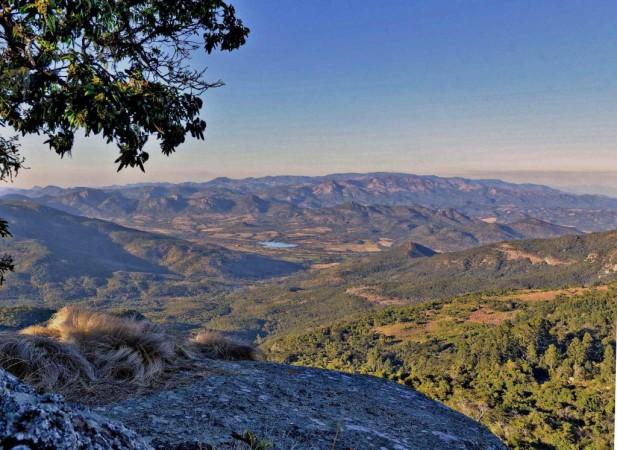
Vumba Mountains - © Handei Zimbabwe
Must-Try Dishes in Mutare
Exploring Mutare's local dishes is a crucial aspect of the adventure. The city's wonderful indigenous meals have a delectable variety of tastes and dishes that represent Zimbabwe's rich culinary heritage.
- Sadza: This staple meal, a thick maize porridge, is an essential component of Zimbabwean cuisine. Sadza is often served with stews, vegetables, or meats and is consumed everyday by locals.
- Nyama: Refers to grilled or braised meat, usually beef or goat, seasoned with spices. Nyama is often served with Sadza and vegetables, making it a popular choice for special occasions and gatherings.
- Vegetable Stews: Zimbabwean vegetable stews include ingredients like spinach, pumpkin leaves, and tomatoes. These hearty dishes are flavored with spices and can include beans or groundnuts for extra protein.
- Chibage: Corn-based Chibage is either roasted or boiled. It’s a versatile ingredient in various traditional dishes and snacks.
- Kapenta: Small dried fish that are usually fried and served with Sadza or as a crunchy snack. Kapenta is a tasty and protein-packed ingredient to many dishes.
- Mopane Worms: These edible caterpillars are a traditional delicacy in Zimbabwe. Mopane worms are usually dried or fried and are enjoyed as a crunchy, protein-packed snack or in stews.
- Gogobera: A savory dish made from groundnuts (peanuts) mixed with meat and vegetables, creating a rich and flavorful stew often enjoyed with Sadza.
- Maheu: A traditional fermented maize drink that is slightly sour and often enjoyed as a refreshing beverage with meals.
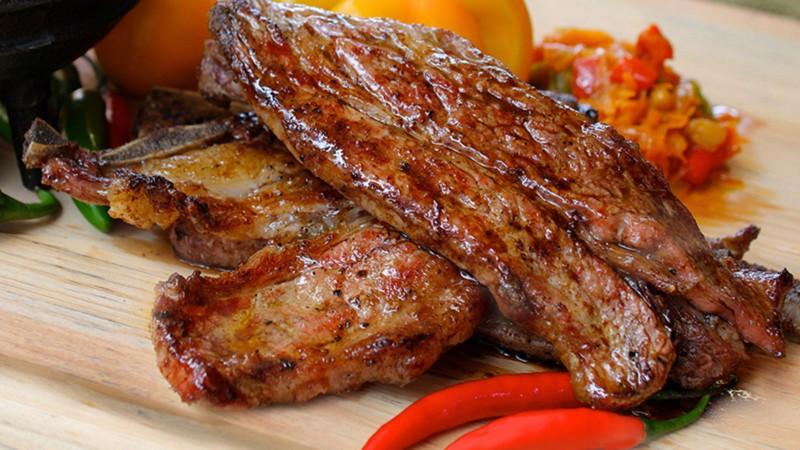
Nyama - © The Roving Foodie
Festivals & Local Celebrations
Mutare Festival
Held annually, the Mutare Festival is a major cultural event that celebrates the city’s artistic and cultural diversity. The festival includes a variety of performances such as music, dance, and theater. It also includes art exhibitions, craft markets, and food stalls offering local and international cuisines. The festival attracts both local residents and tourists, creating a lively atmosphere that highlights the best of Mutare’s creative talents.
Zimbabwe Independence Day
Celebrated on April 18th, Zimbabwe Independence Day marks the country’s liberation from colonial rule. In Mutare, the day is observed with patriotic events, including military parades, community gatherings, and concerts. The festivities are characterized by traditional music and dance, speeches by local dignitaries, and exhibitions showcasing Zimbabwe’s journey to independence. It’s a day of national pride and reflection, offering a deep connection to Zimbabwe’s history.
Gospel Music Festival
This annual event brings together gospel music enthusiasts from all across the region. The festival features performances by local and international gospel artists, and includes choir competitions, worship sessions, and inspirational talks. It’s a celebration of faith and music, offering a spiritually uplifting experience for attendees.

Zimbabwe Independence Day - © NewsDay Zimbabwe
What to Do in Mutare
- Outdoor Adventures: Discover the natural beauty of Mutare through activities like hiking, mountain biking, and birdwatching. The Vumba Mountains and Dangamvura Mountain provide scenic trails and panoramic views. For a more relaxed experience, enjoy a picnic in the lush surroundings of the Mutare Recreational Park.
- Cultural Tours: Immerse yourself in Mutare’s rich heritage by exploring historical sites such as the Mutare Museum. Participate in guided tours that offer insights into the city’s past, including its colonial history and local traditions. Visit local cultural centers to experience traditional arts and crafts.
- Local Craft Workshops: Participate in hands-on sessions where you will discover traditional Zimbabwean crafts. These seminars teach a variety of talents, including beading, ceramics, and wood carving. It's an excellent opportunity to produce one-of-a-kind mementos while also supporting local craftspeople.
- Mutare Safari Day Trips: Take advantage of Mutare’s proximity to several wildlife reserves. Plan a day trip to nearby game parks for a chance to see Zimbabwe’s diverse wildlife, including elephants, lions, and antelopes. Guided safari tours offer educational experiences about the region’s flora and fauna.
- Fishing and Boating: Enjoy recreational activities at nearby rivers and lakes. Fishing enthusiasts can spend a relaxing day casting their lines, while boating options provide a tranquil way to explore the scenic waterways.
Shopping in Mutare
- Mutare Main Market: A vibrant hub of activity, Mutare Main Market is the place to find fresh produce, traditional crafts, and local textiles. The market is a great spot to immerse yourself in the local atmosphere and pick up unique souvenirs, such as handmade jewelry and carved wooden items.
- Makorokoto Craft Village: This craft village showcases local artisans and their handmade products. From traditional beadwork and textiles to intricate carvings and pottery, Makorokoto Craft Village provides an authentic shopping experience and a chance to support local artists.
- Sangano Market: Known for its vibrant atmosphere, Sangano Market features a range of products including fresh fruits, vegetables, and local crafts. The market is an excellent place to explore Zimbabwean culture through its diverse array of goods.
- The Bead Shop: Specializing in beautiful, handcrafted beadwork, The Bead Shop offers a range of colorful and intricate jewelry pieces. It’s a great place to purchase unique accessories and learn about the traditional techniques used in Zimbabwean beadwork.
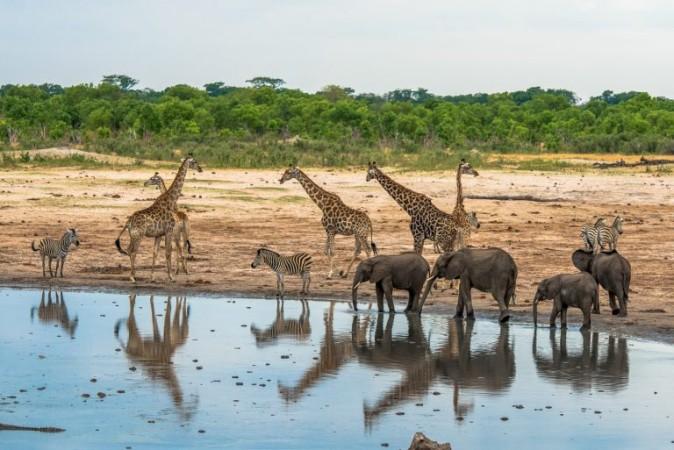
Mutare Safari Trips - © Zimbabwe Tourism
Weather in Mutare: Best Time to Visit
Spring in Mutare
- Weather: Spring sees temperatures rising again, from 15°C to 25°C (59°F to 77°F), with increasing warmth and occasional showers as the season progresses.
- Tourism Trend: Spring is a transitional season with mild temperatures and blooming landscapes. It’s a great time for exploring nature trails, attending local festivals, and enjoying the rejuvenated scenery. The warming weather makes it ideal for both outdoor and cultural activities.
Summer in Mutare
- Weather: This season brings warm temperatures ranging from 20°C to 28°C (68°F to 82°F), with high humidity and occasional thunderstorms. The lush green landscapes and vibrant flora make this a visually appealing time of year.
- Tourism Trend: Summer is a popular time for outdoor activities such as hiking and exploring Mutare’s natural beauty. The wet season enhances the scenery, making it ideal for visiting gardens and parks. However, it’s advisable to plan for potential rain showers and humidity.
Autumn in Mutare
- Weather: Temperatures start to cool, ranging from 15°C to 25°C (59°F to 77°F), with drier conditions and less humidity. The landscape begins to shift as the rainy season tapers off.
- Tourism Trend: Autumn is excellent for sightseeing and outdoor adventures without the intense heat of summer. The cooler temperatures are perfect for exploring cultural sites, markets, and enjoying outdoor festivals. This is also a good time for birdwatching as migratory birds start to appear.
Winter in Mutare
- Weather: Winters are mild with temperatures ranging from 8°C to 22°C (46°F to 72°F). The air is dry, and the skies are generally clear, offering great visibility.
- Tourism Trend: Winter is a peak season for tourism due to the pleasant weather. It’s ideal for engaging in outdoor activities like hiking, visiting nearby wildlife reserves, and exploring Mutare’s attractions. The cooler weather also makes it a comfortable time for city tours and cultural events.
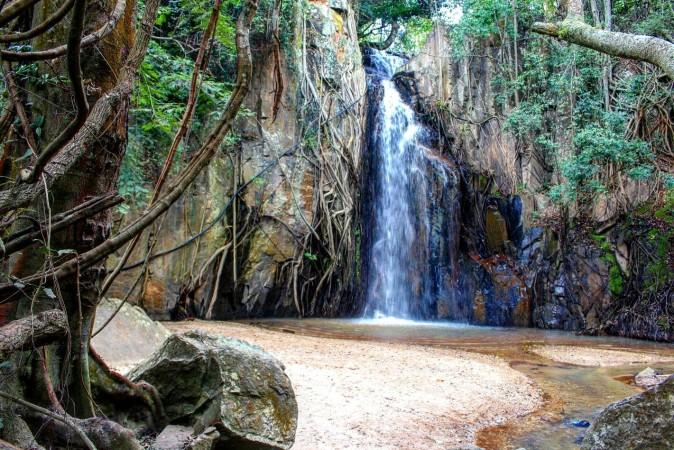
Discover Mutare's natural beauty - © Zim Locals
Essential Travel Information
Getting Around Mutare
- Taxis and Ride-Sharing: Taxis are widely available in Mutare and can be hailed on the street or booked through local taxi services. Ride-sharing apps like Uber may also be available, offering a convenient and often more affordable alternative.
- Public Buses: Local buses provide an economical way to travel within Mutare and to nearby towns. The bus network is extensive, although schedules and routes may vary, so it's best to check in advance.
- Private Cars: Renting a car is a great option for exploring Mutare and its surroundings at your own pace. Several car rental agencies operate in the city, offering a range of vehicles for different needs.
- Bicycles: For a more eco-friendly mode of transport, consider renting a bicycle. Cycling around Mutare allows you to enjoy the city's scenic areas and get a closer look at local life.
ATM & Banking Services
In Mutare, accessing financial services is straightforward with numerous ATMs available throughout the city, offering convenient cash withdrawals and accepting international credit and debit cards. For more comprehensive banking needs, several banks provide a range of services including currency exchange, deposits, and withdrawals. ATMs and bank branches are typically located in central areas, shopping centers, and tourist spots. It’s also advisable to exchange some money before arriving.
Where to Stay in Mutare
- Luxury Hotels: For those seeking a high-end experience, luxury hotels in Mutare provide upscale amenities such as swimming pools, fine dining, and spa services. These establishments offer a premium stay with exceptional service and comfort.
- Mid-Range Hotels: Mid-range accommodations offer a balance of comfort and affordability. These hotels typically feature well-appointed rooms, reliable amenities, and often include options for dining and leisure activities at a more moderate price point.
- Guesthouses: For a more intimate and personalized stay, guesthouses and bed-and-breakfasts in Mutare offer cozy accommodations with local charm. These places frequently offer a warm, inviting ambiance and customized service.
Articles for you

Explore Yala National Park - Sri Lanka Travel, Asia
Tucked away in Sri Lanka’s southeastern corner, Yala National Park is where wild nature meets deep tradition. Known worldwide for its leopard population, the park is also home to elephants, sloth bears, crocodiles, and hundreds of bird species. Beyond wildlife, Yala opens doors to a cultural landscape dotted with ancient temples, Buddhist ruins, and coastal villages. For travelers seeking more than just a safari, Yala offers a chance to explore eco-tourism, local communities, and sacred heritage sites.
Population: The Yala National Park area doesn’t have a human population.
Economy: The economy around Yala National Park thrives on a blend of eco-tourism, agriculture, and local services. Safari tours, eco-lodges, and cultural experiences drive steady income for nearby towns like Tissamaharama and Kataragama, supporting thousands of families.
Landmarks: Famous for Block I of Yala and wildlife encounters, including elephants, sloth bears, crocodiles, and exotic bird species.

Explore Galle - Sri Lanka Travel, Asia
Nestled on Sri Lanka’s southern coastline, Galle is a vibrant city where history meets the sea. Its cobbled streets, colonial architecture, and serene beaches make it a must-visit destination for travelers seeking a blend of culture, adventure, and relaxation. A UNESCO World Heritage site, Galle captivates visitors with its Dutch Fort, bustling markets, and friendly locals. Whether you’re exploring the ramparts at sunset or savoring fresh seafood by the shore, Galle promises an unforgettable journey into Sri Lanka’s heritage.
Population: Approximately 113,000 in 2023.
Economy: Galle’s economy thrives on tourism, trade, and fisheries. The city’s historic fort, colonial architecture, and coastal charm draw thousands of international visitors each year, making tourism its main economic driver. Fishing remains vital for local livelihoods, supplying fresh seafood across the region.
Landmarks: Famous for the Galle Fort, Dutch Reformed Church & Maritime Museum, and Unawatuna Beach.

Explore Bentota - Sri Lanka Travel, Asia
Nestled along Sri Lanka’s southwestern coast, Bentota is a tropical paradise that blends golden beaches, vibrant culture, and thrilling adventures. Famous for its calm waters, luxury resorts, and scenic river estuary, Bentota has become a top destination for travelers seeking both relaxation and authentic experiences. From serene beach walks at sunrise to adrenaline-pumping water sports, this coastal town offers a perfect balance of leisure and exploration. With its proximity to Colombo and Galle, Bentota is easy to reach, making it an ideal stop for both short escapes and extended holidays.
Population: Approximately 37,000 in 2023.
Economy: Bentota’s economy thrives mainly on tourism, which drives local businesses such as hotels, restaurants, and wellness retreats. The town also benefits from fishing, coconut cultivation, and handicrafts like wood carving and batik textiles. Many residents rely on the growing demand for water sports and Ayurvedic treatments, making tourism the backbone of both income and employment in the area.
Landmarks: Famous for Bentota Beach, Bentota River Safari, and Kande Vihara Temple.

Explore Mirissa - Sri Lanka Travel, Asia
Mirissa is a charming coastal town on Sri Lanka’s southern shoreline. Known for its golden beaches, turquoise waters, and vibrant marine life, it has become a must-visit stop for travelers exploring the island. Many come for whale watching, surfing, and sunset views at Coconut Tree Hill, but Mirissa offers much more than postcard beauty. The fishing boats you see anchored by the bay carry generations of stories. Local traditions, delicious cuisine, and a laid-back rhythm of life shape every visitor’s experience.
Population: Approximately 4,700 in 2023.
Economy: Mirissa’s economy is largely shaped by its coastal location. Fishing has long been the backbone of local livelihoods, with generations relying on the Indian Ocean for income. In recent decades, tourism has become the main driver of growth, thanks to whale watching, surfing, and beachside hospitality.
Landmarks: Famous for Mirissa Beach, Coconut Tree Hill, and Parrot Rock Bridge.

Explore Nuwara Eliya - Sri Lanka Travel, Asia
Tucked away in the Central Highlands of Sri Lanka, Nuwara Eliya is often called “Little England”. With its rolling tea plantations, cool misty mornings, and colonial charm, this mountain town feels like a step into another world. Travelers come here to breathe fresh air, walk through flower gardens, sip the finest Ceylon Tea, and enjoy a pace of life far from the island’s busy cities. Whether you’re drawn by scenic landscapes, heritage architecture, or the warmth of its people, Nuwara Eliya is a destination that blends nature, culture, and history in perfect harmony.
Population: Approximately 781,000 in 2023.
Economy: Nuwara Eliya’s economy thrives mainly on tea production, as it sits in the heart of Sri Lanka’s central highlands, famous worldwide for Ceylon Tea. The city also benefits from a growing tourism industry, attracting visitors with its colonial charm, cool climate, and scenic landscapes.
Landmarks: Famous for Gregory Lake, Hakgala Botanical Garden, and Victoria Park.

Explore Sukau - Malaysia Travel, Asia
Nestled on the banks of the Kinabatangan River in Sabah, Malaysian Borneo, Sukau is a destination where wildlife, culture, and conservation come together. Known as one of Asia’s top spots for river safaris and eco-tourism, this quiet village offers a front-row seat to encounters with Bornean orangutans, pygmy elephants, proboscis monkeys, and exotic birdlife.
Population: Approximately 1,400 in 2019.
Economy: Sukau’s economy is shaped by its riverine location and natural resources. Traditionally, the Orang Sungai community relied on fishing, small-scale farming, and forest gathering for their livelihood. Today, the village has shifted toward eco-tourism, with river cruises, jungle trekking, and homestays providing income.
Landmarks: Famous for the Kinabatangan River cruises, Gomantong Caves, and Ox-bow lakes and wetlands.
